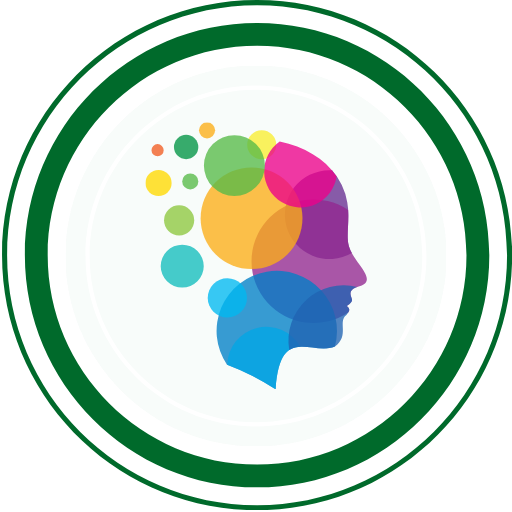
Introduction: Starting Strong in QA
Switching careers can feel like trying to decode an error log without context — daunting but not impossible! In 2018, I took the leap from Civil Engineering to Software Engineering, diving headfirst into the world of QA. My journey to landing that elusive first role wasn’t smooth, but every rejection taught me a lesson worth sharing. 💡
I had just completed a tech boot camp and was ready to take on my first job in IT. I was eager for hands-on experience and to start delivering on projects.
I thought getting my first job would be easy, but it soon became daunting. I searched for internship positions for weeks and months and was unsuccessful. It was so overwhelming and I was discouraged. I received numerous rejection emails. After months of searching, I decided to do things differently.
In this article, I will share a few tips that helped me land my first Job in tech. I hope these tips help you as well. Tip 1 and tip 2 were the actual tips that helped me land my first Software Engineering job. I have added tips 3 and 4 because some of my mentees utilized them as I advised. This guidance helped them get started in their first jobs. I believe they can also be helpful to you.
Tip 1: Build a Project to Showcase Your Skills
Why Projects Matter:
Employers want problem solvers, not spectators. A tangible project not only boosts confidence but also showcases your technical skills.
Building a project doesn’t just boost your confidence. It is a confirmation that you have put into practice what you’ve learned. The tech industry is hands-on. Soft skills are good but having technical skills is also important. Employers are seeking problem solvers and not bench warmers. I realized that my CV wasn’t enough. I needed to show visual proof of my skills. So, I built a project to showcase what I had learned in the past couple of months. I finally got my first interview. On the interview day, I passionately shared my story and most importantly my project with the interviewer. The interviewer was so impressed that he offered me an internship role on the spot.
How to Get Started:
- Select an Application: Pick a domain like fintech or e-commerce.
- Test Cases and Plans: Write functional test cases and create a detailed test plan.
- Execute Testing: Test the application and compile a comprehensive report.
- Automate: Use tools like Selenium, Postman, or Cypress to automate key flows. Push your work to GitHub. 🔧
- Rinse and Repeat: Build more projects to grow your portfolio.
Tools to Use:
| Tool | Purpose | Free/Paid |
|---|---|---|
| Selenium | Web app testing automation | Free |
| Postman | API testing | Free (Pro available) |
| TestRail | Test case management | Paid |
| GitHub | Code repository | Free (Pro available) |
Tip 2: Master the Art of Unsolicited Emails
Why Email Works:
Sometimes, the perfect job isn’t advertised. Reaching out directly can open hidden doors. Reaching out to startups and well-established companies can open new doors. It is better to reach out than not to try at all. I crafted detailed emails to each company with an existing QA team. I also emailed companies that do not have an existing QA team. The plan was to pitch my skills and express my interest in working for the company. You can get any company email on their website career page, contact page, and LinkedIn page.
Steps to Crafting an Email:
- Subject Line: Clear and role-specific (e.g., “QA Intern Application – [Your Name]”).
- Personalized Body:
- Highlight your skills.
- Explain how you can add value to their team.
- Attachments: Include your updated resume and relevant project links.
- Closing: End with gratitude and a professional sign-off.
Pro Tip:
Track company emails on their website, LinkedIn, or career pages. Use tools like Hunter.io for email discovery.
Tip 3: Volunteer for Hands-On Experience
Why Volunteering Matters:
Volunteering is a win-win: You gain experience while contributing value. Volunteering is one of the fastest ways to boost your confidence and get hands-on experience. You could enhance your skills and network by offering to perform testing activities on open-source platforms. Although some volunteering opportunities require experienced professionals, don’t let that deter you. Send out your applications and share how your skills will benefit the team.
Where to Volunteer:
| Platform/Organization | Type of Contribution |
| QABash- Global QA Engineering Network | Write for The Testing Times / Contribute in open-source testing projects |
| Ministry of Testing | Open-source testing projects |
| United States for Africa | Volunteer in QA for tech-driven NGOs |
Success Story:
A mentee volunteered to test an open-source health app. Their report caught the attention of the project’s manager, leading to a full-time role! 🚀
Tip 4: Prioritize Networking Like a Pro
The Networking Secret:
Network! Network! Network! Not all job openings are advertised, especially intern roles. I encourage you to be intentional about networking. Do not be shy in asking for referrals from friends and family. I have personally referred young QAs fresh out of boot camps looking for their first role. Friends and acquaintances referred these folks to me. I’m glad I could help them in their career journey. You can take advantage of other networking channels like LinkedIn, QABash, etc. Ensure to participate in discussions on these platforms because active participation can enhance your visibility.
How to Network:
- LinkedIn: Share insights, comment on posts, and join QA groups.
- QAbash Community: Participate in discussions and Testathons.
- Referrals: Ask friends, mentors, or family for leads.
Pro Tip:
Active engagement increases visibility. A simple “Congratulations” comment can lead to meaningful conversations. 😊
Bonus: Tools and Resources for QA Beginners
Here are essential tools every QA newbie should explore:
| Category | Tool | Why It’s Awesome |
| Bug Tracking | JIRA | Manage and prioritize bugs effectively |
| Collaboration | Slack | Team communication made easy |
| Test Automation | Cypress | Easy-to-learn testing for modern web apps |
| API Testing | Postman | Simplifies API requests and validations |
Conclusion: Take Action and Stay Persistent
Landing your first QA job can feel like testing a flaky app — frustrating but fixable. Build projects, send emails, volunteer, and network relentlessly. Persistence pays off! 🏆
If you have any questions or success stories, share them in the comments. Let’s grow together!
FAQs: Your QA Career Questions Answered
Q1: Do I need a degree to start in QA?
No! A boot camp, certification, or self-study can be enough if you showcase practical skills.
Q2: What are some beginner-friendly certifications for QA?
Certifications like ISTQB Foundation Level or Agile Tester are great for starting out.
Q3: Can I get a QA job without coding skills?
Yes, especially in manual testing roles. However, learning basic coding can open automation testing opportunities.
Q4: How can I make my GitHub profile attractive?
Include well-documented QA projects, detailed READMEs, and diverse testing examples.
Q5: What’s the best way to stay updated in QA?
Follow industry blogs, attend webinars, and join communities like QABash, The Test Tribe and Ministry of Testing.
QABash Nexus—Subscribe before It’s too late!
Monthly Drop- Unreleased resources, pro career moves, and community exclusives.

Very well done. Very comprehensive, I’m very impressed. Thank you for sharing.
Thanks Zack.
Well crafted, indeed this is a great motivation
Thank you Ndukeabasi.
This is great, Kingsley.
Thank you for referring me for my first QA role. Happy to say that I’ve not looked back ever since. Keep soaring!!!
Thank you @Udofia. I am glad of your achievements too. Keep soaring too.